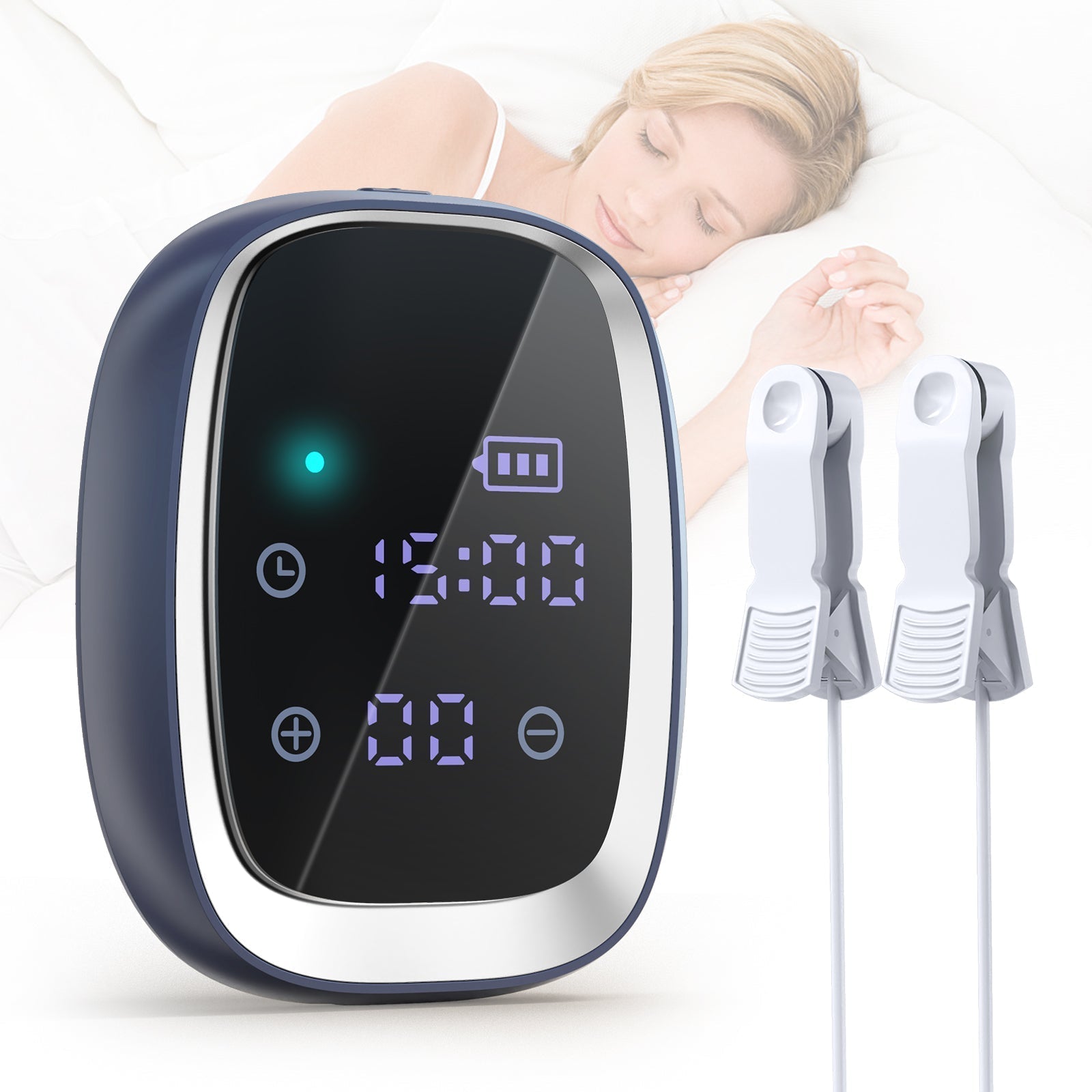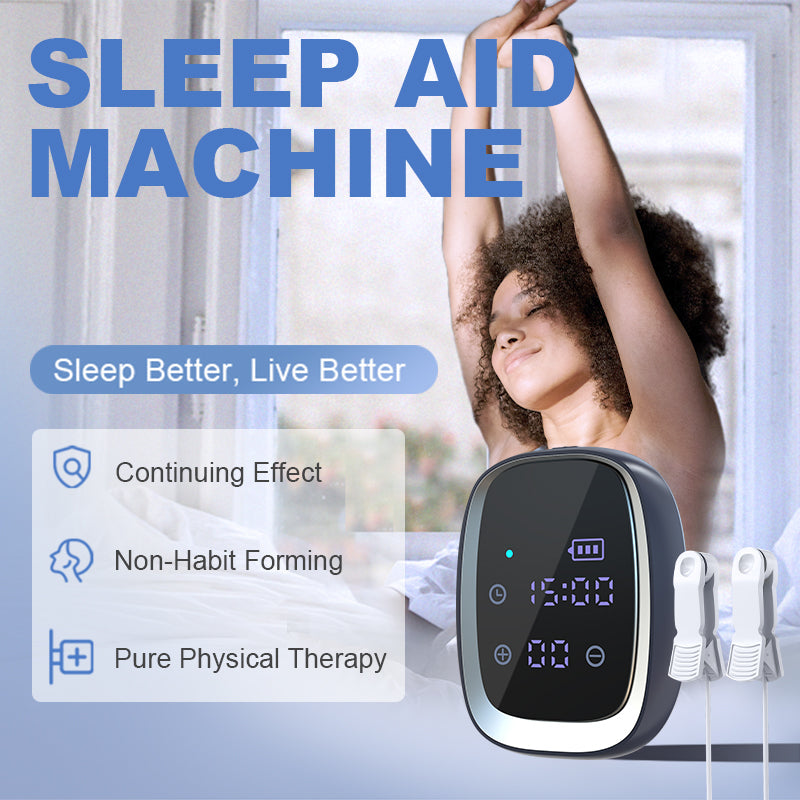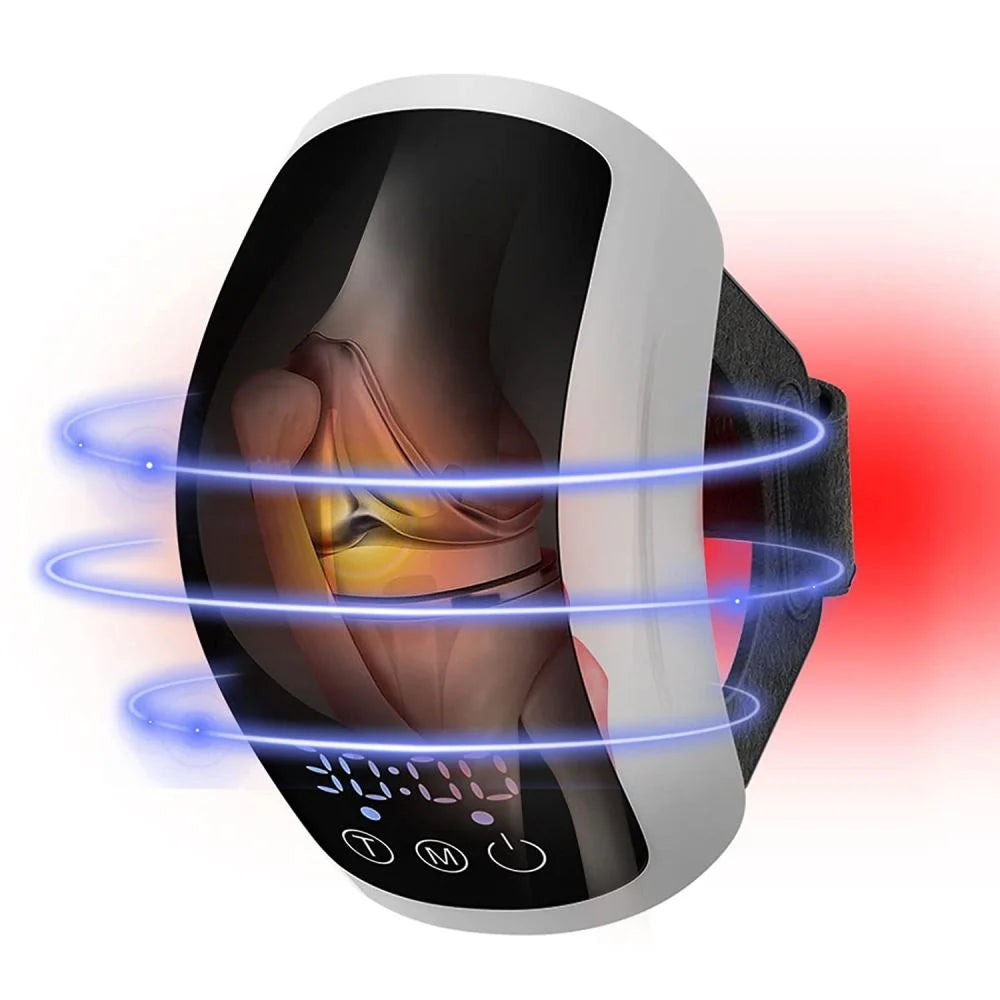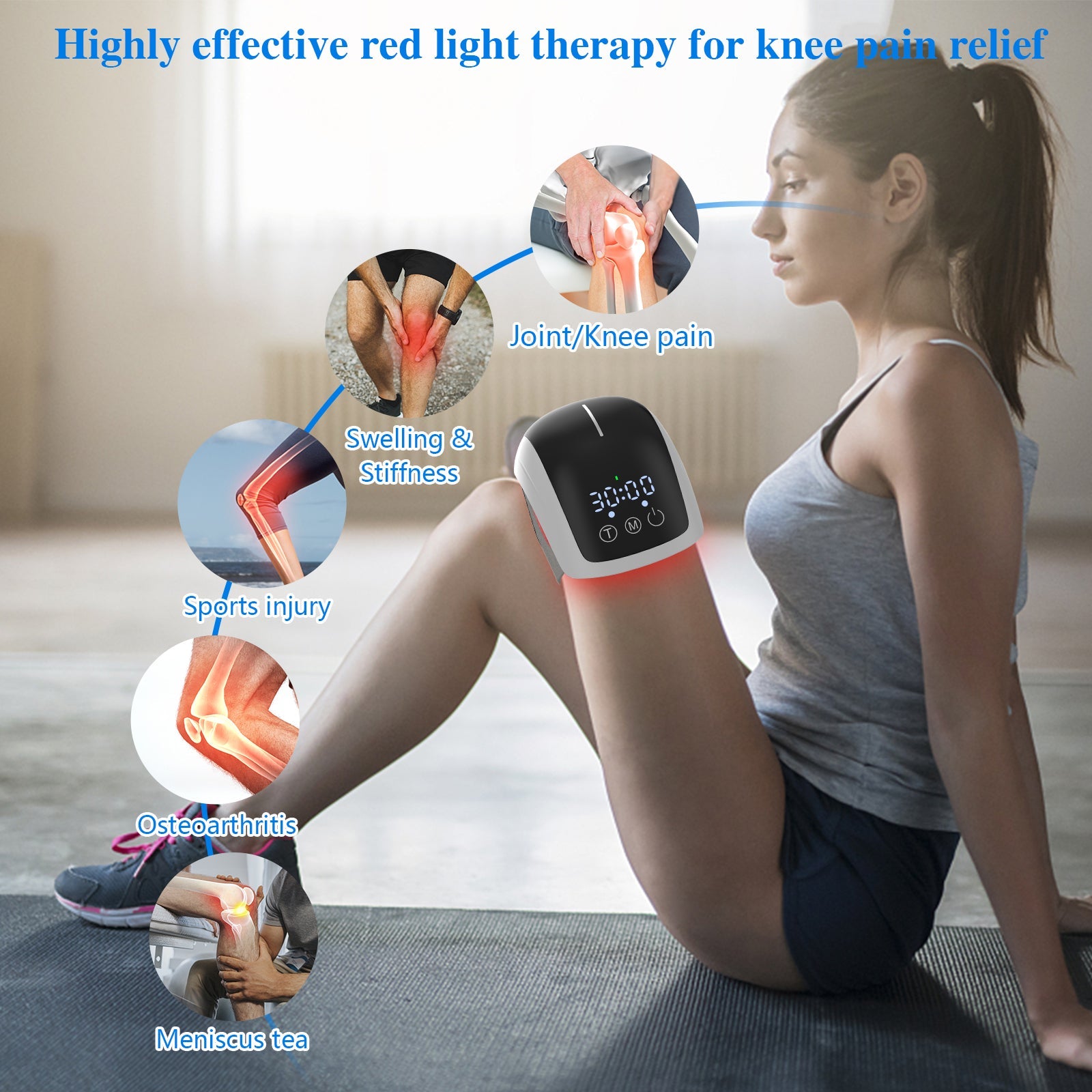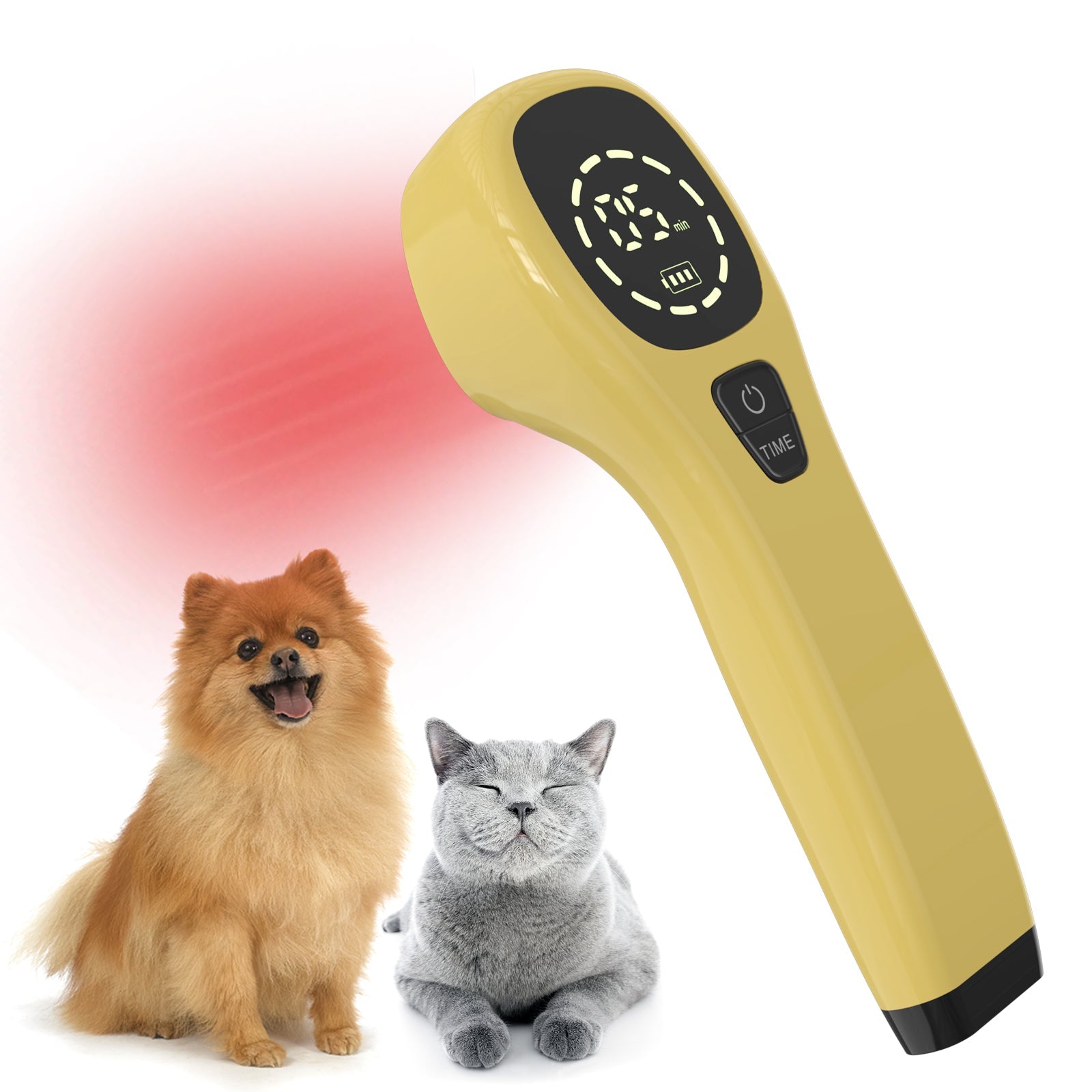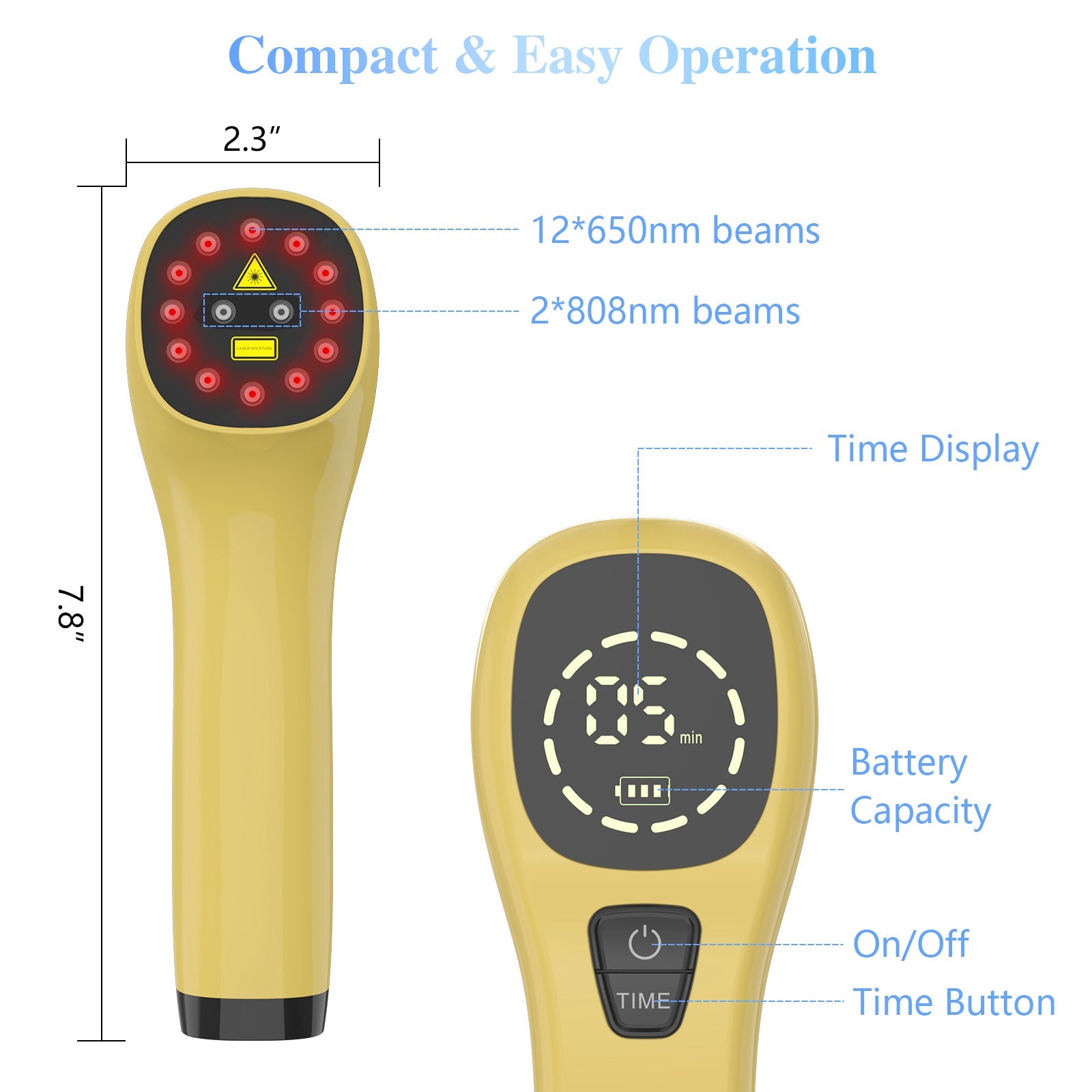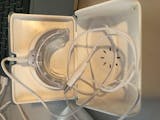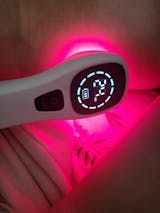Introduction
In the world of alternative health treatments, there's a gentle yet powerful technique known as low-level laser therapy or photobiomodulation. This therapy is about using specific light types to help the body heal itself. Imagine a gentle, warm light that ranges from the colors of a sunset to the deepest reds, shining on an area that hurts or needs healing. This light, invisible to our eyes, works at the cellular level to ease pain, boost circulation, protect cells from damage, kickstart the body's energy factories (the mitochondria), ease discomfort, and ensure the tissues get plenty of oxygen. It's a kind of high-tech healing that doesn't rely on needles or surgery. (Kárová et al., 2020) The efficacy of red-light and near-infrared light therapy is rooted in their ability to penetrate the skin and underlying tissues, stimulating cellular repair and energy production. Despite their shared therapeutic objectives, they operate on different wavelengths, each offering unique advantages and applications. This distinction, however, remains a source of confusion for many, blurring the lines between their respective uses and benefits. This article aims to demystify light therapy by exploring the nuances between red and near-infrared light. Through a detailed examination of their mechanisms, applications, and scientific backing, we aim to clarify the distinctions and therapeutic implications of each, providing a clear guide for individuals seeking to leverage the healing powers of light.
Physics of light
Light therapy takes advantage of a slice of the electromagnetic spectrum, which is like an extensive rainbow of different kinds of energy, ranging from visible light to radio and microwaves, all the way to ultraviolet and infrared light. What we can see with our eyes falls between 380 to 750 nanometers (nm), but just beyond that is the invisible infrared spectrum, stretching from about 750 nm up to a full millimeter in wavelength. This infrared part is split into three groups: near-infrared (750 to 1400 nm), mid-infrared (1400 to 3000 nm), and far-infrared (3000 nm to 1 mm). The kind of light therapy often used to help our bodies repair and heal falls in the near-infrared range, which overlaps a bit with the red end of the visible light spectrum we can see. Both lasers and LEDs can produce these healing wavelengths, which can dive deep into tissues, encouraging cells to regenerate and energize themselves. This process, known as photobiomodulation, makes light therapy a promising tool for health and healing. (Heiskanen & Hamblin, 2018) (Han & Lim, 2016)
Mechanisms of Action
Red light and near-infrared light therapies work like a specialized energy boost for your cells. These therapies shine specific wavelengths of light onto your body, and this light travels through your skin to reach deeper tissues. The secret to their success lies within our cells, in the power plants known as mitochondria. These mitochondria are responsible for making the energy that our cells need to heal wounds and keep our hearts beating. The wavelengths used in red light and near-infrared therapies are chosen because they're the perfect type to interact with an enzyme inside these cellular power plants called cytochrome c oxidase (CCO). CCO plays a crucial role in the production of cellular energy. When red and near-infrared light hit this enzyme, they give it a nudge, helping it work more efficiently. This boost can speed up healing, reduce inflammation, and help alleviate pain. It's like pressing the accelerator pedal in a car but for cell energy production!(Hamblin, 2018)
Red light and near-infrared light therapies are like targeted energy boosts for your cells, especially the mitochondria, the powerhouses that churn out energy. When these specific wavelengths of light hit your skin and seep into the tissues beneath, they have a special chat with an enzyme inside the mitochondria called cytochrome c oxidase, or CCO for short. CCO is a big deal in the last step of the cell’s energy-making process, helping to pass electrons along in a microscopic relay race that ends with a burst of energy, otherwise known as ATP. These therapies get CCO fired up, which sets off a chain reaction: It shuffles oxygen and electrons around, making water and, importantly, cranking out ATP. Other molecules like nitric oxide (NO), which is known for relaxing and expanding blood vessels, and reactive oxygen species (ROS) can signal that it's time for the body to repair damage. (Cardoso et al., 2022) This boost in energy supply enhances various cellular functions, promotes healing, and fosters cell proliferation and survival.
Furthermore, photobiomodulation can lead to increased blood flow and the formation of new capillaries, a process known as angiogenesis. This improves tissue oxygenation and nutrient delivery to the treated areas. The release of nitric oxide, a vasodilator, from cells further enhances blood circulation and oxygenation. Significant changes in protein expression levels associated with antioxidant and redox regulation, anti-apoptotic and pro-survival pathways, and cellular proliferation are observed with photobiomodulation mechanisms of action. These modifications indicate that photobiomodulation can induce notable changes in tissue homeostasis, healing, and regeneration processes. For example, structural proteins like collagen undergo new synthesis to mend tissue damage, as outlined by (Rocha et al., 2016). Cells that are at risk of dying in tissues subjected to ischemic or similar injuries receive protection, a finding supported by (Sussai et al., 2010). Furthermore, stem cells are spurred into action, leaving their niches to proliferate and differentiate, a process detailed by (Oron & Oron, 2016).
Additionally, photobiomodulation has been shown to mitigate pain and inflammation, as reported by (Chow et al., 2009), and to enhance blood circulation, which could be partly attributed to the release of nitric oxide (Mitchell & Mack, 2013). This increase in blood flow also promotes lymphatic drainage, helping to alleviate edema, as demonstrated by (Dirican et al., 2011). Collectively, these effects underscore the multifaceted impact of PBM on cellular and tissue-level processes, underscoring its potential for therapeutic applications in tissue repair and regeneration.
Red-Light Therapy
Red Light Therapy utilizes light in the wavelength range of approximately 630nm to 700nm. This specific range is significant because it strikes a balance between penetrating the skin effectively and being absorbed by cellular photoreceptors, primarily cytochrome c oxidase in the mitochondria. The light within this spectrum can initiate photobiological processes without causing damage to the tissue, making it ideal for therapeutic applications.
Red-light therapy has a broad range of applications, owing to its non-invasive nature and its ability to promote healing and reduce inflammation:
- Skin Health: Red-light therapy is widely used in dermatology to improve skin complexion, reduce signs of aging, and treat acne. Stimulating collagen production helps improve skin rejuvenation and elasticity.(Rocha et al., 2016)
- Wound Healing: The therapy accelerates wound healing by enhancing tissue repair and regeneration. It supports the process through increased collagen synthesis, reduced inflammation, and improved blood circulation.(Chaves et al., 2014)
- Inflammation Reduction: It effectively reduces inflammation associated with various conditions, including musculoskeletal disorders like tendonitis or superficial injuries. It provides a therapeutic approach for pain and inflammation management without the side effects of certain medications.(Mitchell & Mack, 2013)
Near-infrared Light Therapy
Near-Infrared Light Therapy employs wavelengths ranging from approximately 700 to 1100nm. This spectrum is considered Near Infrared because it lies just beyond the visible red light on the electromagnetic spectrum, transitioning into the infrared range. Wavelengths in this band are characterized by their ability to penetrate deeper into tissues compared to visible light, including red light, making them particularly effective for reaching deeper-lying structures within the body. Near-infrared wavelengths have a unique capability to penetrate deeper layers of skin and tissue. This allows the light to reach muscles, bones, and even the brain, where it can exert its biological effects. By penetrating deeper into the body, Near-Infrared therapy can enhance cellular repair and regeneration in muscles and joints, reduce inflammation and pain deep within tissues, and may even stimulate neurogenesis and improve cognitive functions when applied to the head. Like red-light therapy, Near-infrared light therapy stimulates mitochondria in cells, enhancing ATP production in deeper tissues.
It is utilized in a variety of applications, leveraging its deep tissue penetration for:
- Muscle Recovery: It accelerates muscle recovery after physical exertion by reducing inflammation and muscle fatigue and increasing ATP production, thus providing cells with more energy for repair and growth.(Heiskanen & Hamblin, 2018)
- Joint Pain Relief: NIRLT effectively alleviates joint pain, including osteoarthritis. It helps by reducing inflammation in the joints and enhancing joint mobility.(Chow et al., 2009)
- Neurological Benefits: Emerging evidence suggests that it can positively affect brain health, including enhancing cognitive function, improving mood, and potentially aiding in treating neurodegenerative diseases. The therapy’s ability to penetrate the skull influences neuronal activity and promotes neurogenesis.(Cardoso et al., 2022)
Many studies support the use of near-infrared light therapy in these areas, demonstrating its potential as a powerful medical treatment and rehabilitation tool.
Comparative Analysis
The key difference between red light therapy and near-infrared light therapy is their ability to penetrate skin and tissues. Red light, with wavelengths typically between 630nm and 700nm, can penetrate the skin to a certain extent, affecting mostly the surface and slightly deeper skin layers. Red light therapy is particularly effective for treating issues close to the skin's surface. On the other hand, near-infrared light has wavelengths ranging from 700nm to 1100nm and penetrates much deeper into the body. This deeper penetration allows near-infrared light therapy to reach muscles, joints, and even the brain, offering therapeutic benefits to deeper tissues and organs inaccessible by red light. The choice between red light therapy and near-infrared light therapy often depends on the treated condition and the desired therapeutic outcomes. Each type of light offers unique benefits tailored to surface-level or deeper tissue concerns.
Case Studies and Examples
A ground-breaking application of near-infrared light therapy is illustrated through a case study (Vrankic et al., 2022), focusing on an 84-year-old elderly individual exhibiting signs of memory and cognitive impairment, as indicated by a Self-Administered Gerocognitive Exam (SAGE) score suggestive of probable mental disorders. SAGE is a concise self-administered questionnaire designed to assess cognitive function, targeting the identification of mild cognitive impairment (MCI) and the initial indicators of dementia. This study utilized a prototype near-infrared light device designed explicitly for photobiomodulation to assess its impact on the brain's power spectrum and connectivity. The subject reported noticeable improvements in cognitive functions, experiencing enhanced memory recall and sharper thinking processes. This real-world application of near-infrared light therapy, documented through scientific analysis and patient feedback, showcases the potential of photobiomodulation in addressing cognitive impairments and enhancing brain function.
Another study (Wunsch & Matuschka, 2014) explored the efficacy of photobiomodulation for skin rejuvenation. Unlike traditional narrow-band laser and LED treatments, this research utilized broad-spectrum light in two wavelength ranges, 611–650 nm, and 570–850 nm, to treat skin concerns such as fine lines, wrinkles, and roughness and to increase collagen density. The study involved 136 volunteers, 113 of whom were treated and 23 who served as controls.
Results showed significant enhancements in skin complexion, texture, and collagen density among treated subjects, which were confirmed by objective measures and blinded clinical evaluations. Interestingly, the study found no significant advantage in using a broad-spectrum polychromatic light over red light alone. However, both treatment modalities were effective and safe for skin rejuvenation and collagen enhancement compared to controls. These studies underscore the potential of red and near-infrared light therapy in cosmetic and therapeutic applications. It demonstrates their safety and effectiveness in improving skin health and appearance without needing narrow-band, high-intensity light sources.
Challenges and Considerations
Red Light Therapy and Near-Infrared Light Therapy are widely recognized for their therapeutic and cosmetic benefits and are considered safe for various applications. However, potential risks, such as temporary discomfort, redness, irritation, and, in improper use, tissue damage or eye injury, should be noted. Near-Infrared Light Therapy, with its deeper tissue penetration, might also carry a risk of overheating tissues, though such risks are generally minimal with correct usage. Caution is advised for individuals with photosensitivity, those on photosensitizing medications, pregnant women, and those with specific health conditions, recommending consultation with a healthcare provider before use. The accessibility and cost-effectiveness of devices depend on factors like device quality, treatment area size, and whether the device is intended for professional or home use. Professional devices, being more powerful, are costlier but allow for comprehensive treatments. Conversely, home devices offer convenience and cost savings over time despite the initial investment. The market's growth has improved device availability, yet high-quality devices may need to be in reach for some due to cost.
Conclusion
In conclusion, Red Light Therapy and Near-Infrared Light Therapy are distinct yet complementary therapies with applications ranging from skin rejuvenation to deep tissue repair. Red Light Therapy, effective for surface-level issues, and Near-Infrared Light Therapy, which reaches deeper structures, both leverage the power of light to stimulate healing, reduce pain, and improve cellular function. While safe and beneficial, appropriate use is recommended to avoid potential side effects, with accessibility and cost being essential factors. This article has clarified their uses, offering insights to harness their therapeutic potential responsibly.
References
Cardoso, F. dos S., Barrett, D. W., Wade, Z., Gomes da Silva, S., & Gonzalez-Lima, F. (2022). Photobiomodulation of Cytochrome c Oxidase by Chronic Transcranial Laser in Young and Aged Brains. Frontiers in Neuroscience, 16, 818005. https://doi.org/10.3389/fnins.2022.818005
Chaves, M. E. de A., de Araújo, A. R., Piancastelli, A. C. C., & Pinotti, M. (2014). Effects of low-power light therapy on wound healing: LASER x LED. Anais Brasileiros de Dermatologia, 89(4), 616–623. https://doi.org/10.1590/abd1806-4841.20142519
Chow, R. T., Johnson, M. I., Lopes-Martins, R. A. B., & Bjordal, J. M. (2009). Efficacy of low-level laser therapy in the management of neck pain: A systematic review and meta-analysis of randomised placebo or active-treatment controlled trials. Lancet (London, England), 374(9705), 1897–1908. https://doi.org/10.1016/S0140-6736(09)61522-1
Dirican, A., Andacoglu, O., Johnson, R., McGuire, K., Mager, L., & Soran, A. (2011). The short-term effects of low-level laser therapy in the management of breast-cancer-related lymphedema. Supportive Care in Cancer: Official Journal of the Multinational Association of Supportive Care in Cancer, 19(5), 685–690. https://doi.org/10.1007/s00520-010-0888-8
Hamblin, M. R. (2018). Photobiomodulation for Traumatic Brain Injury and Stroke. Journal of Neuroscience Research, 96(4), 731–743. https://doi.org/10.1002/jnr.24190
Han, K.-Y., & Lim, S. (2016). Red and Near Infrared Light from Light Emitting Diodes for Therapeutic Applications. Nanoscience and Nanotechnology Letters, 8(1), 90–93. https://doi.org/10.1166/nnl.2016.2118
Heiskanen, V., & Hamblin, M. R. (2018). Photobiomodulation: Lasers vs Light Emitting Diodes? Photochemical & Photobiological Sciences : Official Journal of the European Photochemistry Association and the European Society for Photobiology, 17(8), 1003–1017. https://doi.org/10.1039/c8pp00176f
Kárová, K., Urdzíková, L. M., Romanyuk, N., Svobodová, B., Kekulová, K., Kočí, Z., Jendelová, P., & Kubinová, Š. (2020). Chapter 8—Tissue engineering and regenerative medicine in spinal cord injury repair. In A. J. Salgado (Ed.), Handbook of Innovations in Central Nervous System Regenerative Medicine (pp. 291–332). Elsevier. https://doi.org/10.1016/B978-0-12-818084-6.00008-8
Mitchell, U. H., & Mack, G. L. (2013). Low-level laser treatment with near-infrared light increases venous nitric oxide levels acutely: A single-blind, randomized clinical trial of efficacy. American Journal of Physical Medicine & Rehabilitation, 92(2), 151–156. https://doi.org/10.1097/PHM.0b013e318269d70a
Oron, A., & Oron, U. (2016). Low-Level Laser Therapy to the Bone Marrow Ameliorates Neurodegenerative Disease Progression in a Mouse Model of Alzheimer’s Disease: A Minireview. Photomedicine and Laser Surgery, 34(12), 627–630. https://doi.org/10.1089/pho.2015.4072
Rocha, J. C. T., Ferraresi, C., Hamblin, M. R., Damasceno, F. M., do Nascimento, N. R. F., Driusso, P., & Parizotto, N. A. (2016). Low-Level Laser Therapy (904nm) Can Increase Collagen and Reduce Oxidative and Nitrosative Stress in Diabetic Wounded Mouse Skin. Journal of Photochemistry and Photobiology. B, Biology, 164, 96–102. https://doi.org/10.1016/j.jphotobiol.2016.09.017
Sussai, D. A., Carvalho, P. de T. C. de, Dourado, D. M., Belchior, A. C. G., dos Reis, F. A., & Pereira, D. M. (2010). Low-level laser therapy attenuates creatine kinase levels and apoptosis during forced swimming in rats. Lasers in Medical Science, 25(1), 115–120. https://doi.org/10.1007/s10103-009-0697-9
Vrankic, M., Vlahinić, S., Šverko, Z., & Markovinović, I. (2022). EEG-Validated Photobiomodulation Treatment of Dementia—Case Study. Sensors, 22(19), Article 19. https://doi.org/10.3390/s22197555
Wunsch, A., & Matuschka, K. (2014). A Controlled Trial to Determine the Efficacy of Red and Near-Infrared Light Treatment in Patient Satisfaction, Reduction of Fine Lines, Wrinkles, Skin Roughness, and Intradermal Collagen Density Increase. Photomedicine and Laser Surgery, 32(2), 93–100. https://doi.org/10.1089/pho.2013.3616

